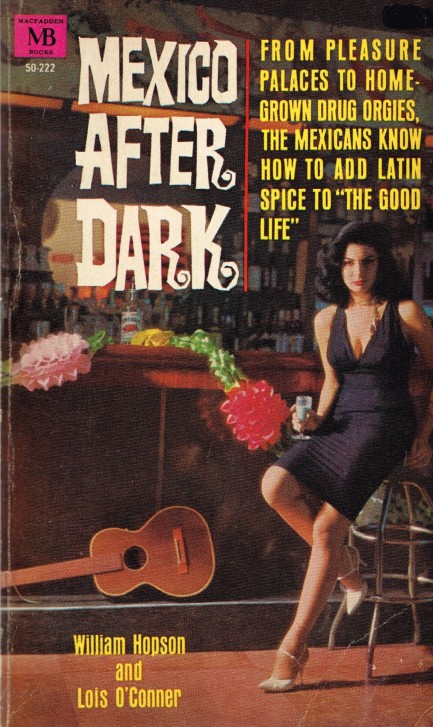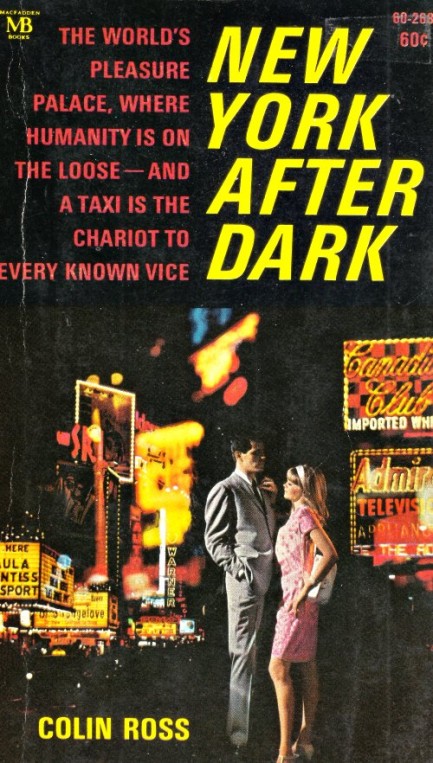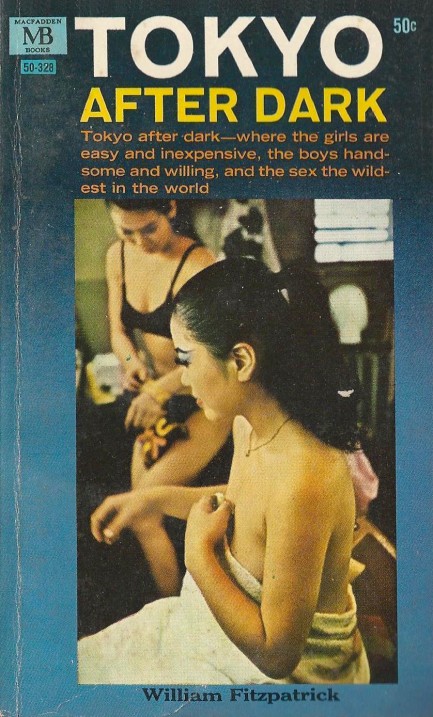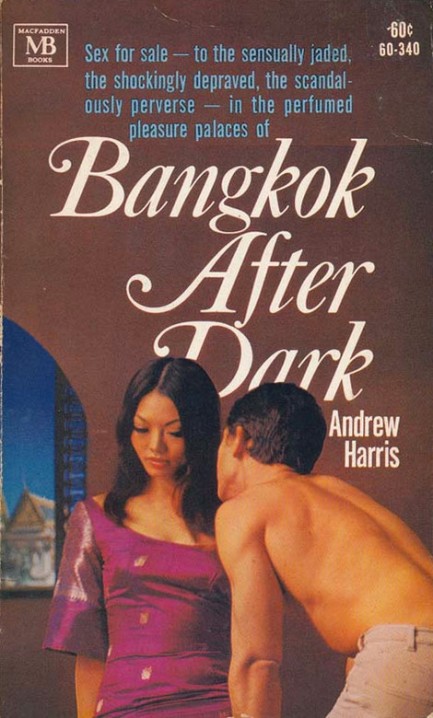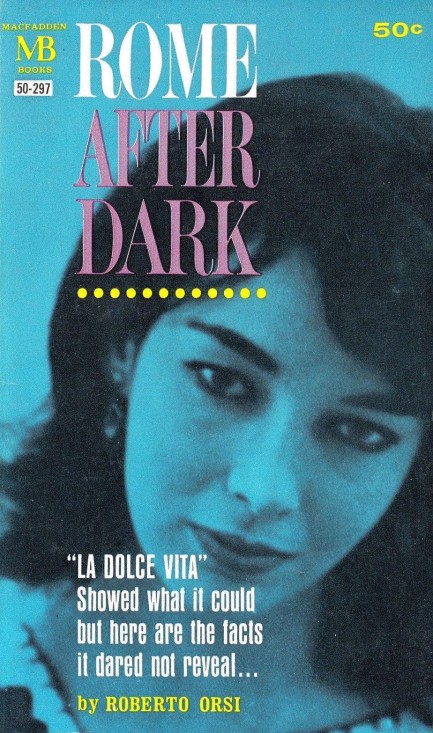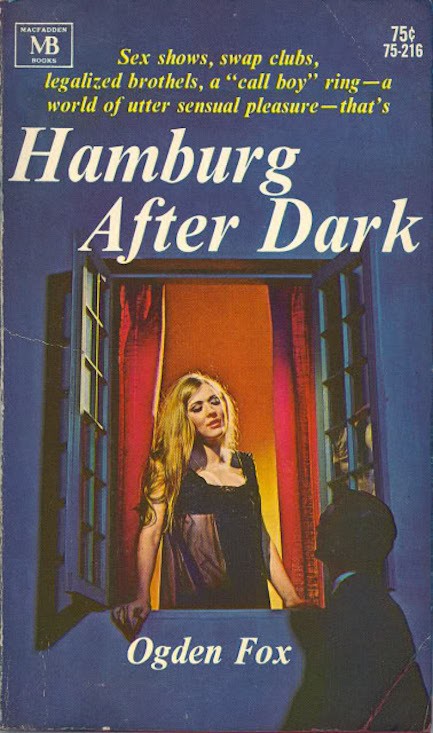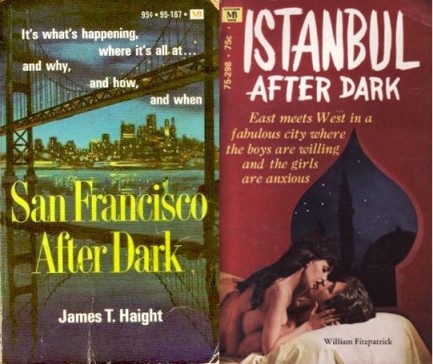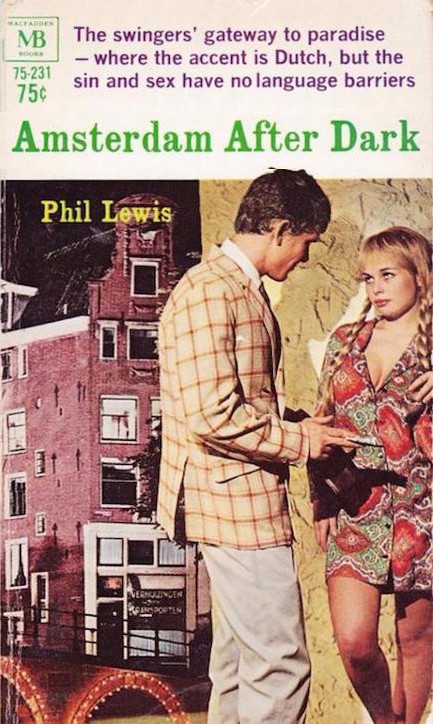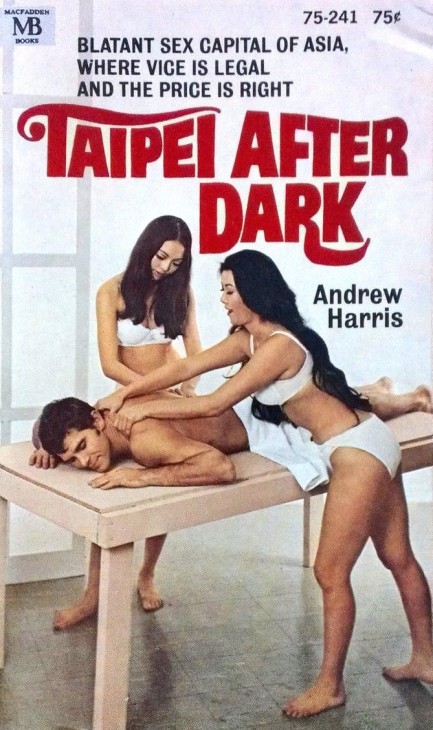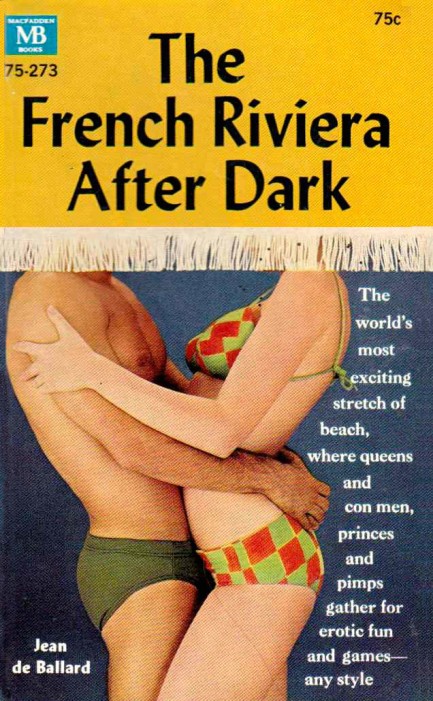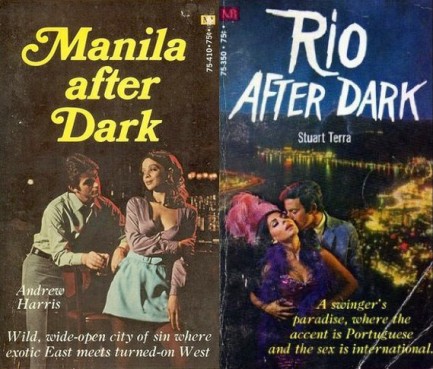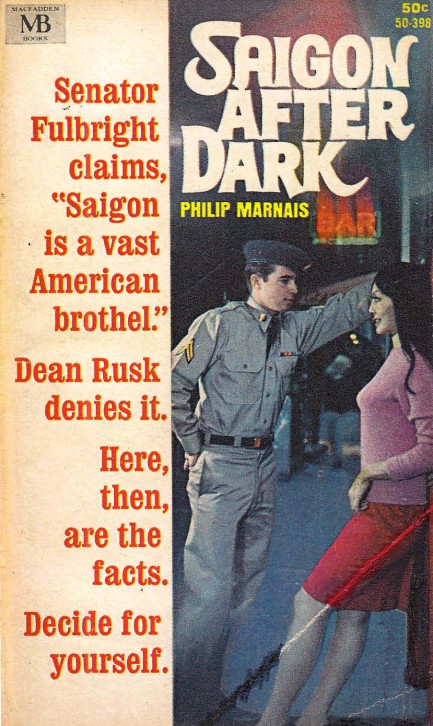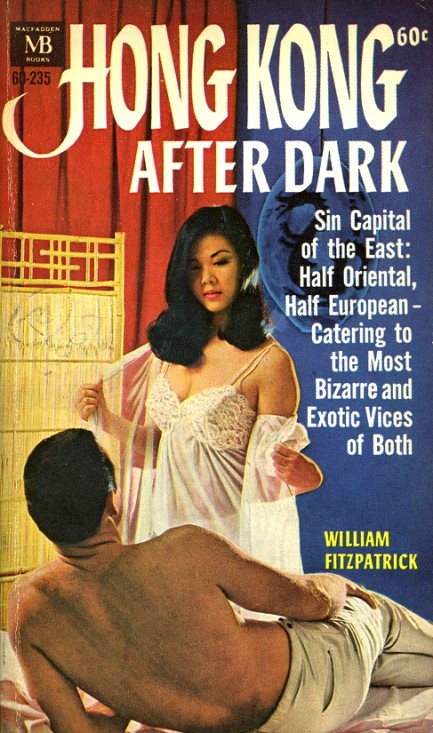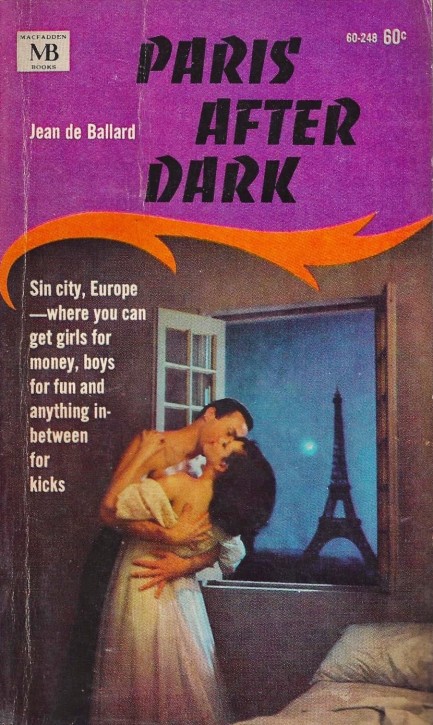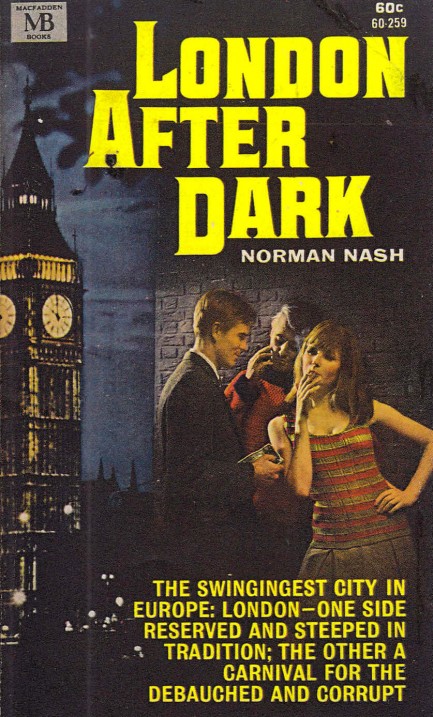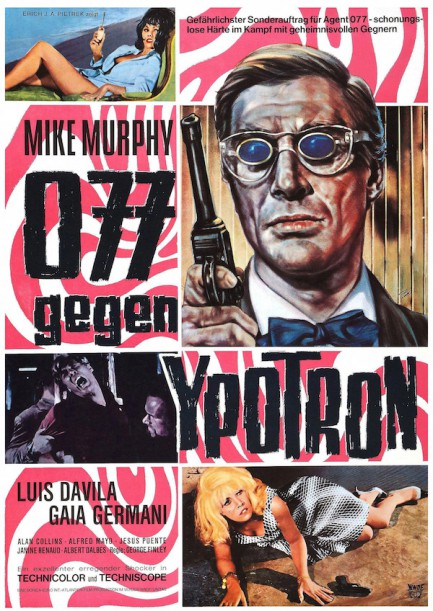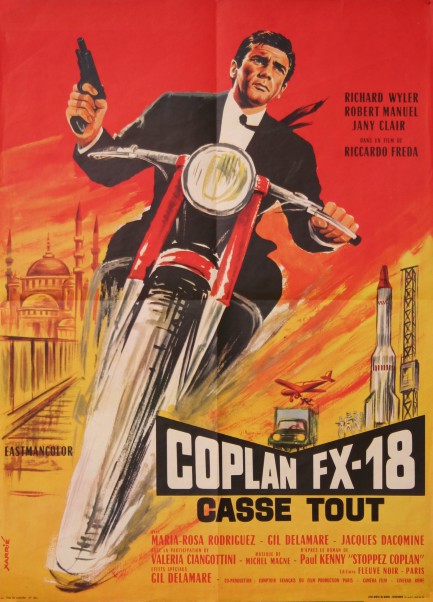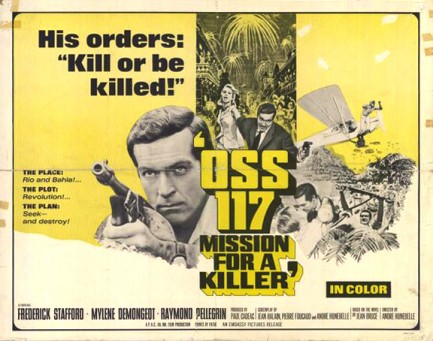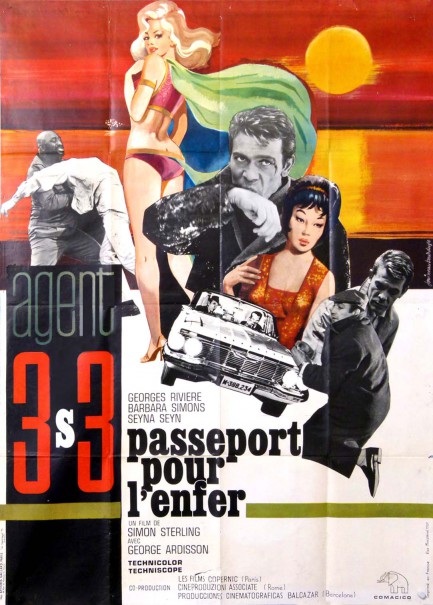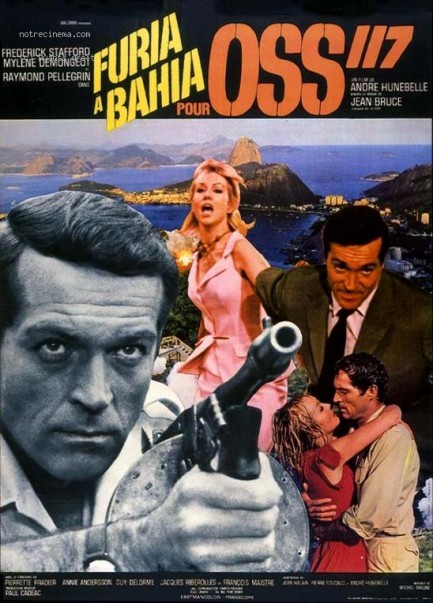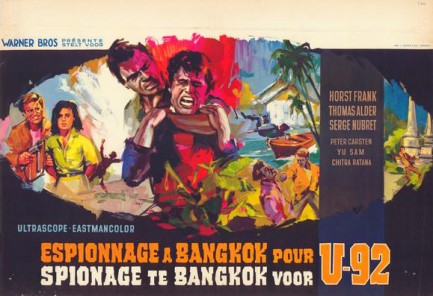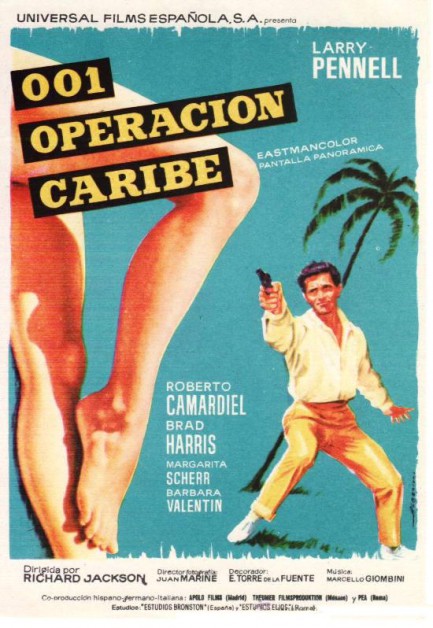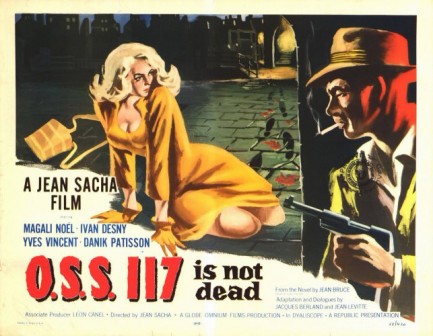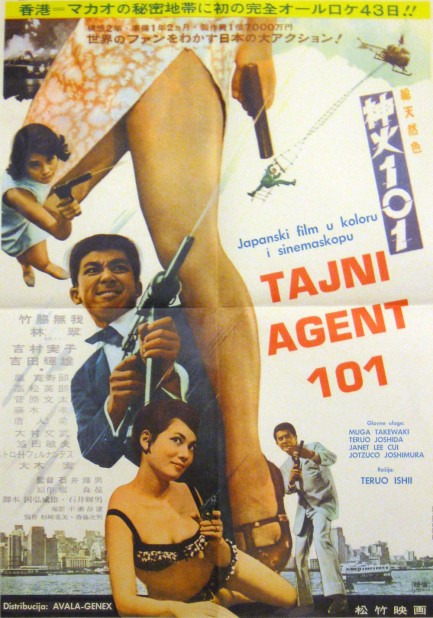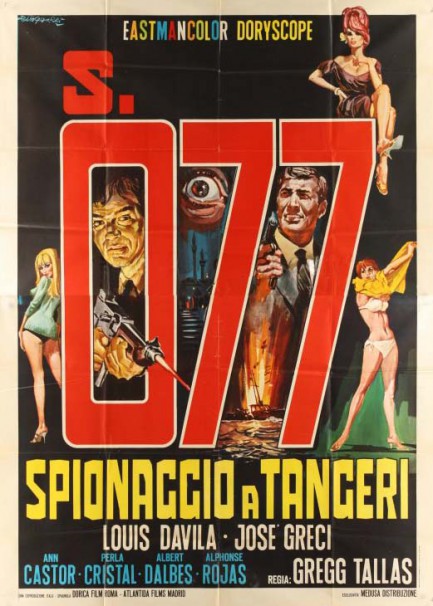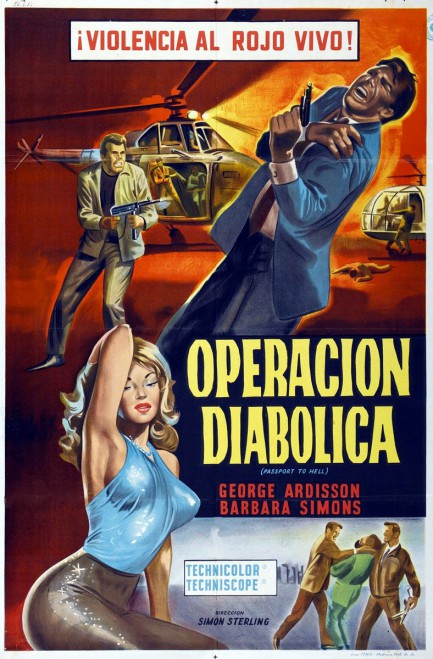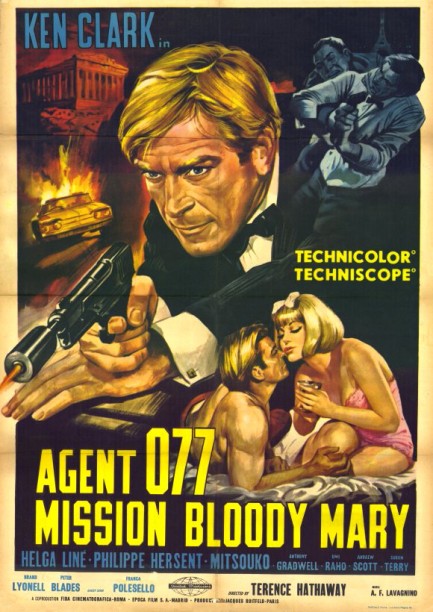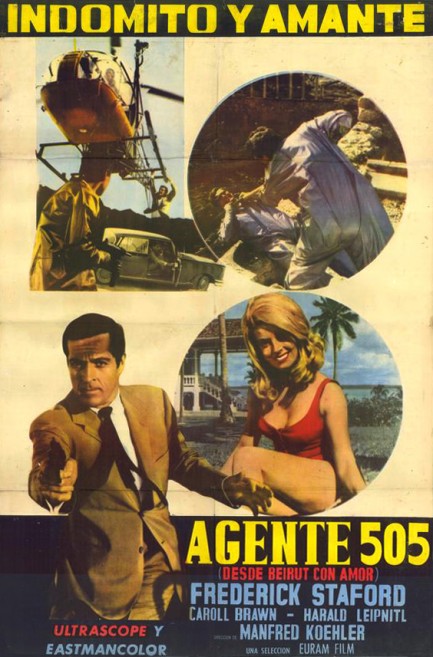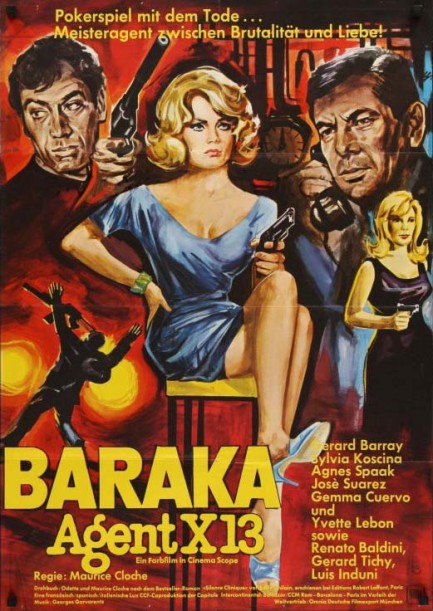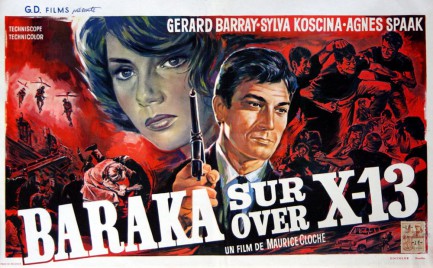 Can you keep a secret? I'm way ahead of my time. 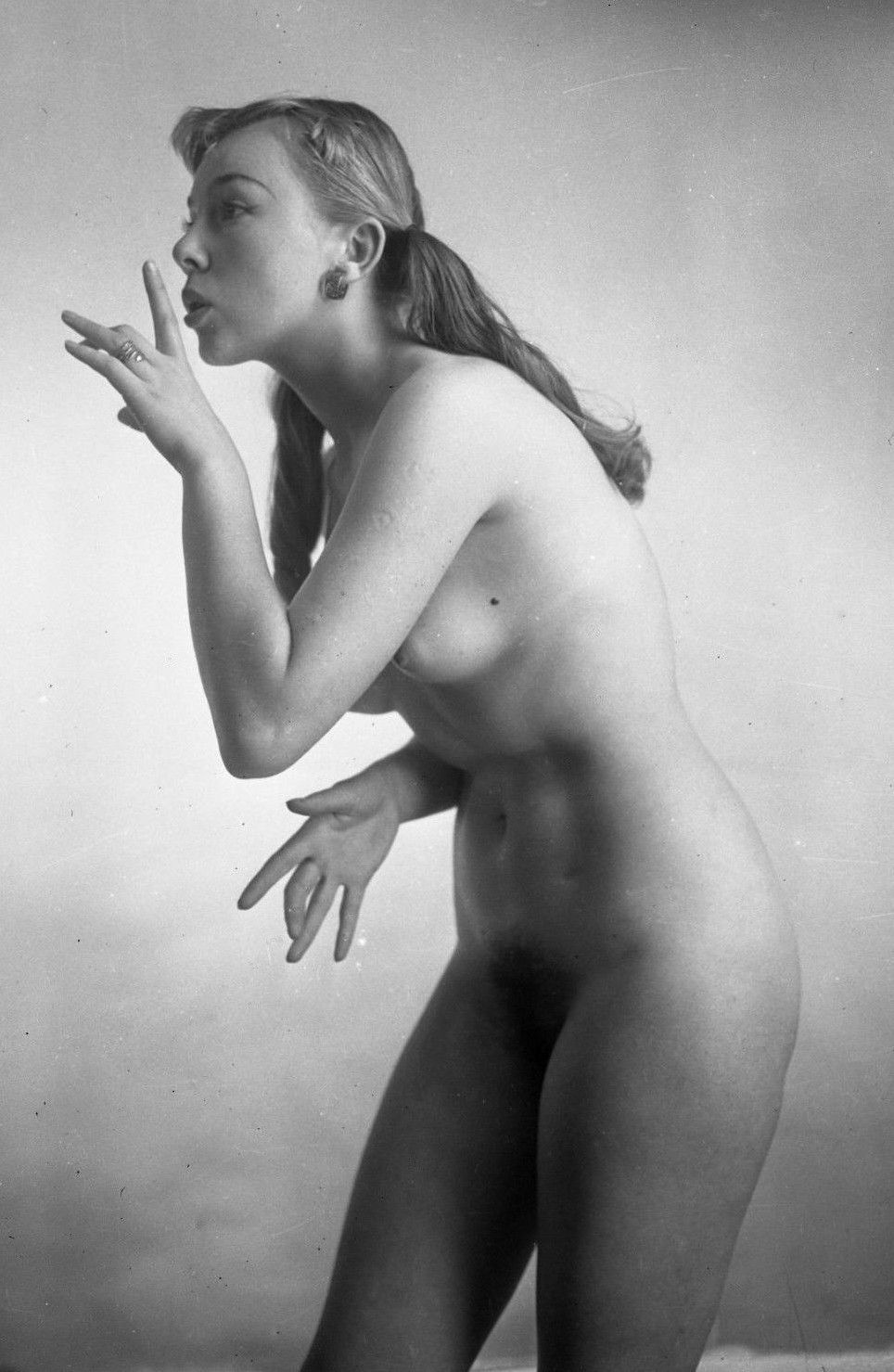
Above is a fantastically beautiful Serge Jacques photo of Belgian actress and model Dominique Wilms that dates from the early 1950s. Wilms appeared in films such as Poison Ivy, Banco à Bangkok pour OSS 117, and Les femmes s'en balancent, aka Dames Don't Care. Looks like Dom don't care either, as this is a very provocative nude for a working actress of the 1950s. Just a glimpse of pubic hair was enough to get photographers and vendors sent to prison, even in France, where Jacques was based. The shot surfaced years after it was made, we suspect, and we should rejoice that it saw the light of day, because daring Dominique is all that and a box of hot tamales.
 His martial arts are lethal and his wardrobe is killer. 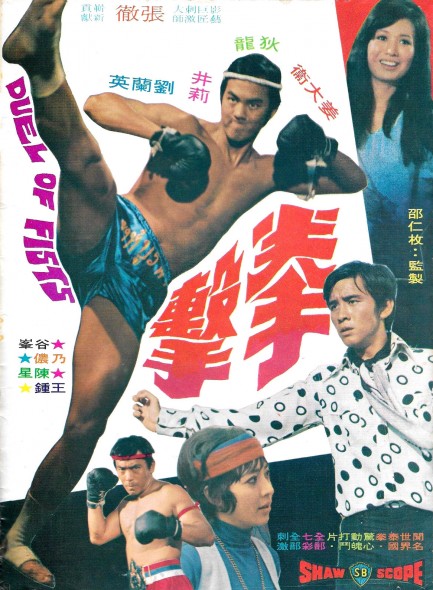
Above is a poster for the Hong Kong actioner Quan Ji, aka Duel of Fists, which, based on the placement of the English text, you'd actually expect to be called Duel of Nuts. Or are we the only ones seeing that? Anyway, what you get here is the story of a nerdy engineer slash ace martial artist who learns from his ailing father that he has a long lost older brother, the result of a whirlwind affair with a Thai girl. Sent to Bangkok to find his sibling, geek boy eventually discovers him in a fighting ring. A series of circumstances that begins with big brother beating the local crime syndicate's champion brings the wrath of the bad guys, and the brothers have no choice but to go medieval on the entire mob.
This movie is worth watching for two reasons. First, some of the fighting is Muay Thai, which was obscure to westerners back then and makes Quan Ji one of the first films to showcase that particular discipline. And second, David Chang plays the unsophisticated younger brother while wearing a series of gaudy outfits that you'd absolutely love to have for your next ’70s party. Chang has made more than a hundred movies and was still active just a couple of years ago, but we doubt he ever surpassed the discofied wardrobe he wore here. Despite the Rick James flavor he brings to the party we'd describe the movie as merely adequate. But it did make us want to listen to "Super Freak." Quan ji premiered in Hong Kong today in 1971. 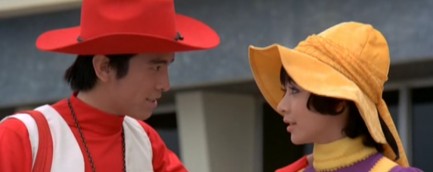 I've met so many girls. Then I come to Bangkok and meet one who sees as much value in primary colors as I do. What are the odds? I've met so many girls. Then I come to Bangkok and meet one who sees as much value in primary colors as I do. What are the odds? 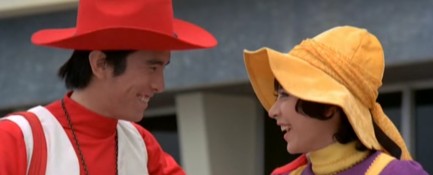 By the way in Hong Kong one of our official languages is English, and in English Bangkok sounds like... Well, I'll explain it in detail later. By the way in Hong Kong one of our official languages is English, and in English Bangkok sounds like... Well, I'll explain it in detail later.  I told her what Bangkok sounds like and she loved it. Total keeper. I told her what Bangkok sounds like and she loved it. Total keeper. 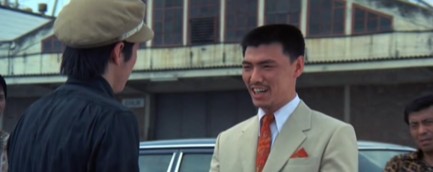 I know every dojo in the Far East and I've never heard of your Studio 54. I know every dojo in the Far East and I've never heard of your Studio 54.  You wouldn't shoot the best electric slider in all of Thailand, would you? You wouldn't shoot the best electric slider in all of Thailand, would you? 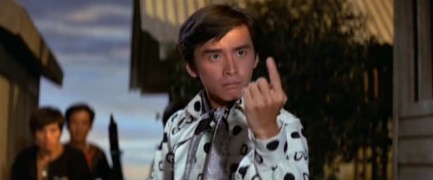 I'm going to demonstrate this one more time. It's called the hustle and I learned it in the East Village. I'm going to demonstrate this one more time. It's called the hustle and I learned it in the East Village. 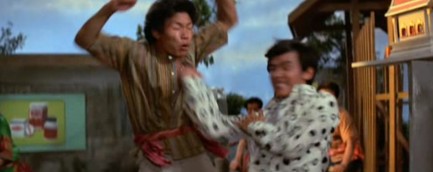 Hya... ABBA! Hya... ABBA! 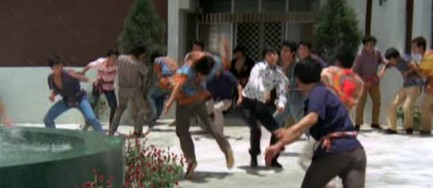 Everybody was Muay Thai fightin'.... HUAH! Those kids were fast as lightning... Everybody was Muay Thai fightin'.... HUAH! Those kids were fast as lightning...  You better run, losers and haters! Come back when you learn how to dress! You better run, losers and haters! Come back when you learn how to dress! 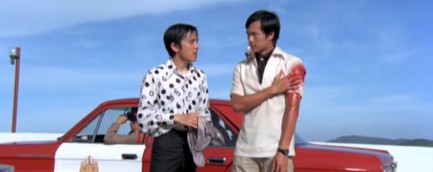 Depending on the opponent's particular style and what the deejay is spinning these dance-offs can get pretty violent. Depending on the opponent's particular style and what the deejay is spinning these dance-offs can get pretty violent.
 Sharky's Machine hums along nicely, but only up to a point. 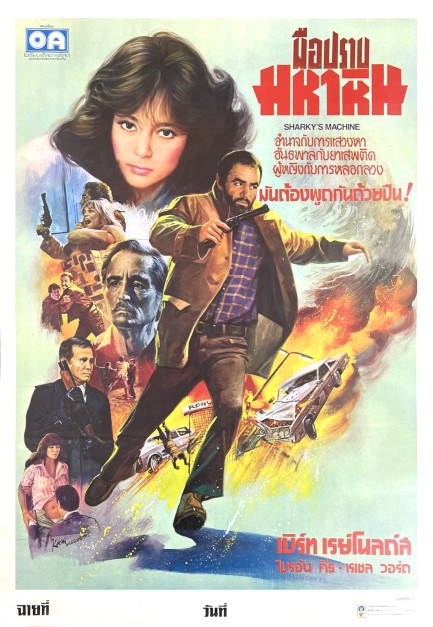
This poster was painted by the Thai illustrator Kwow for the 1981 thriller Sharky's Machine. Every blue moon or so Hollywood decides to update a ’40s film noir. Sometimes these are excellent movies—Body Heat as a rework of Double Indemnity comes to mind. Sharky's Machine is based on William Diehl's novel of the same name, which is a restyling of 1944's Laura. If you haven't seen Laura, a detective falls in love with a murdered woman, focusing these feelings upon her portrait, which is hanging over the mantle in her apartment. In Sharky's Machine the hero, Atlanta vice detective Burt Reynolds, falls in love with Rachel Ward via his surveillance of her during a prostitution investigation, and is left to deal with his lingering feelings when she's killed.
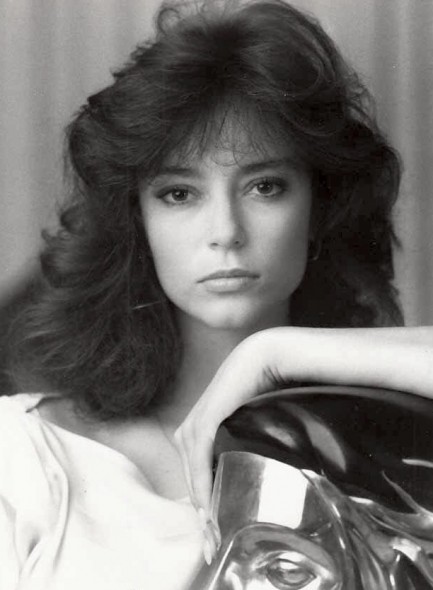 Ward observed years back that she had been too prudish in how she approached her roles, and we imagine this was one movie she had in mind. We agree with her. Reynolds' 24/7 surveillance of a high-priced hooker is not near frank enough. This is where vice, voyeurism, and sleaze as subtext should have come together overtly, as it does in Diehl's unflinchingly detailed novel, rather than as stylized montages, which is what Reynolds opts for. Ward observed years back that she had been too prudish in how she approached her roles, and we imagine this was one movie she had in mind. We agree with her. Reynolds' 24/7 surveillance of a high-priced hooker is not near frank enough. This is where vice, voyeurism, and sleaze as subtext should have come together overtly, as it does in Diehl's unflinchingly detailed novel, rather than as stylized montages, which is what Reynolds opts for. Sex and nudity aren't always gratuitous. The plot driver in old film noirs is often sex, but it couldn't be shown. Remaking a noir affords the opportunity to explore the sexual aspect further, as in Body Heat, where it's literally the lure of sex with no boundaries—exemplified by that famous (but implied) anal scene—that snares the hero in an insane murder plot. In Sharky's Machine it's sexual objectification that is the initial driver. Reynolds loves Ward's body first and her personality later, but the surveillance that is the key to this is barely explored.
It's a missed opportunity to not only make a better thriller, but to examine this lust-to-love transition as an aspect of all romantic relationships. Reynolds doubled as both star and director of the film, and while his relative newbie status in the latter realm may be a reason he didn't push the envelope, he still manages in his third outing helming a motion picture to put together a final product that is stylish, dark, and neon-streaked—everything a neo-noir should be. Upon release many critics had problems with tone—violence and humor seemed to clash. Reynolds' was a semi-comedic cinematic figure and his previous two directorial efforts had been comedies, which may have led to jokes leaking into unusual moments of the film. But these days the mix of violence and comedy is common, so we doubt you'll be terribly annoyed by these few incongruities.
The main flaw with the movie, besides its chasteness, is not its tone, but that it feels compressed in the latter third, especially as relates to the love subplot. True, the film is already a shade over two hours long, but it's time that flies by, populated as it is by so many interesting roles and great actors (Bernie Casey, Brian Keith, Vittorio Gassman, Charles Durning). Another seven minutes would not have hurt. Still, we recommend this one. It should have been as bold a noir rework as Body Heat, but there's plenty to entertain in other areas, and Hollywood may make this film perfect yet—a new version of Sharky's Machine is in development with Mark Wahlberg in the lead. Hah hah—who are we kidding? They'll screw it up completely. You already know that. 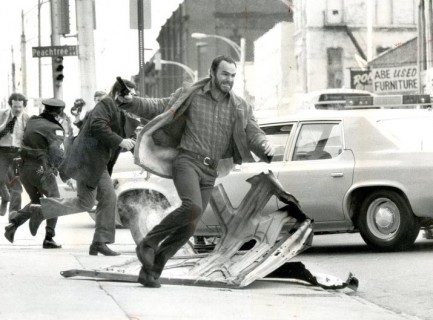 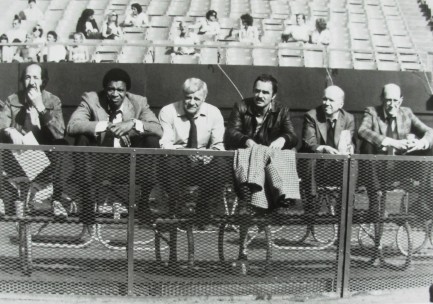 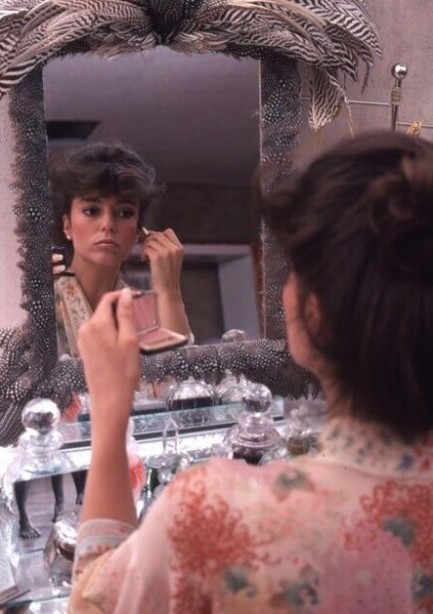 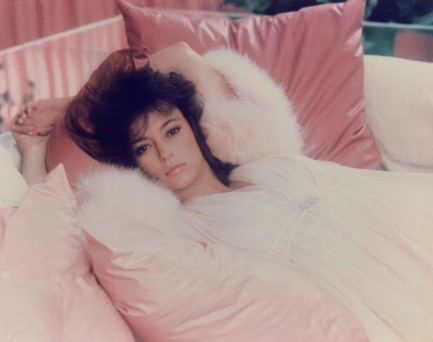 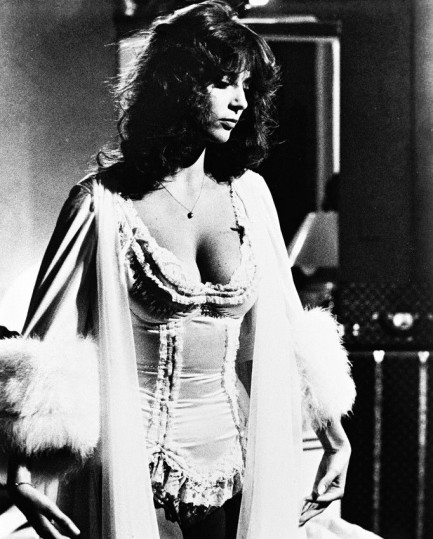 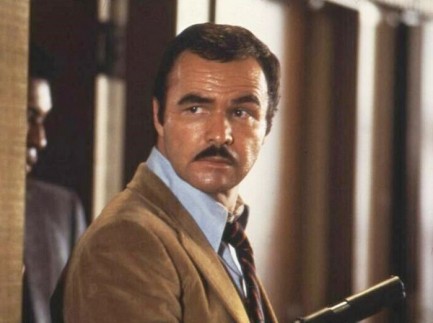   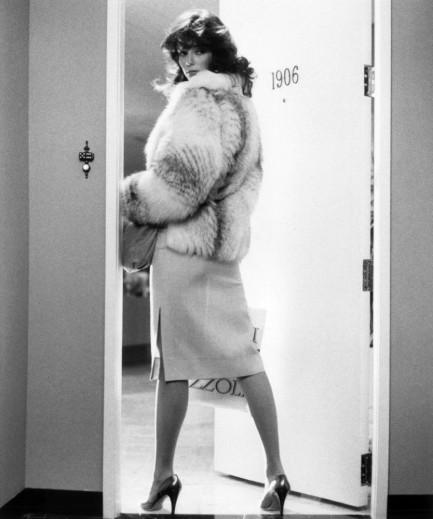 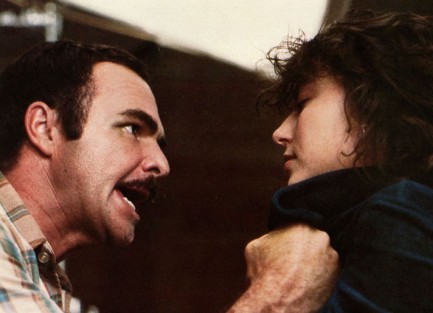 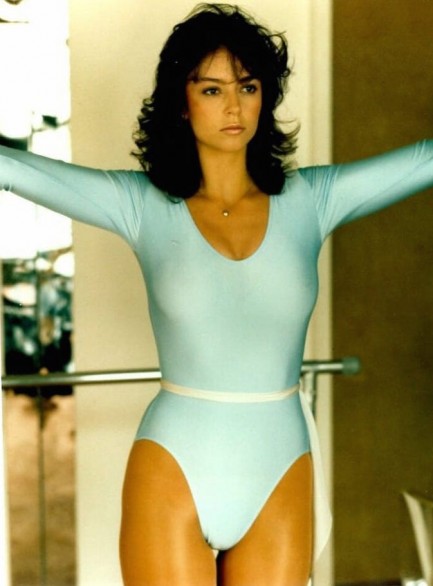  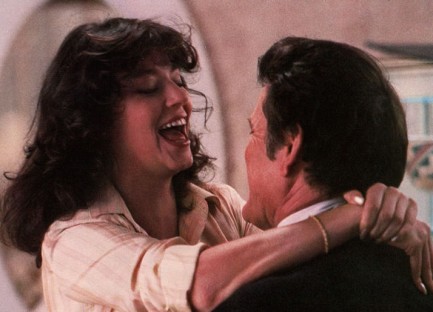 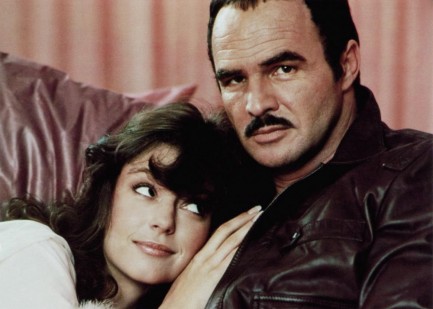
|
 |

The headlines that mattered yesteryear.
2003—Hope Dies
Film legend Bob Hope dies of pneumonia two months after celebrating his 100th birthday. 1945—Churchill Given the Sack
In spite of admiring Winston Churchill as a great wartime leader, Britons elect
Clement Attlee the nation's new prime minister in a sweeping victory for the Labour Party over the Conservatives. 1952—Evita Peron Dies
Eva Duarte de Peron, aka Evita, wife of the president of the Argentine Republic, dies from cancer at age 33. Evita had brought the working classes into a position of political power never witnessed before, but was hated by the nation's powerful military class. She is lain to rest in Milan, Italy in a secret grave under a nun's name, but is eventually returned to Argentina for reburial beside her husband in 1974. 1943—Mussolini Calls It Quits
Italian dictator Benito Mussolini steps down as head of the armed forces and the government. It soon becomes clear that Il Duce did not relinquish power voluntarily, but was forced to resign after former Fascist colleagues turned against him. He is later installed by Germany as leader of the Italian Social Republic in the north of the country, but is killed by partisans in 1945.
|

|
|

It's easy. We have an uploader that makes it a snap. Use it to submit your art, text, header, and subhead. Your post can be funny, serious, or anything in between, as long as it's vintage pulp. You'll get a byline and experience the fleeting pride of free authorship. We'll edit your post for typos, but the rest is up to you. Click here to give us your best shot.

|
|




 I've met so many girls. Then I come to Bangkok and meet one who sees as much value in primary colors as I do. What are the odds?
I've met so many girls. Then I come to Bangkok and meet one who sees as much value in primary colors as I do. What are the odds? By the way in Hong Kong one of our official languages is English, and in English Bangkok sounds like... Well, I'll explain it in detail later.
By the way in Hong Kong one of our official languages is English, and in English Bangkok sounds like... Well, I'll explain it in detail later. I told her what Bangkok sounds like and she loved it. Total keeper.
I told her what Bangkok sounds like and she loved it. Total keeper. I know every dojo in the Far East and I've never heard of your Studio 54.
I know every dojo in the Far East and I've never heard of your Studio 54. You wouldn't shoot the best electric slider in all of Thailand, would you?
You wouldn't shoot the best electric slider in all of Thailand, would you? I'm going to demonstrate this one more time. It's called the hustle and I learned it in the East Village.
I'm going to demonstrate this one more time. It's called the hustle and I learned it in the East Village. Hya... ABBA!
Hya... ABBA! Everybody was Muay Thai fightin'.... HUAH! Those kids were fast as lightning...
Everybody was Muay Thai fightin'.... HUAH! Those kids were fast as lightning... You better run, losers and haters! Come back when you learn how to dress!
You better run, losers and haters! Come back when you learn how to dress! Depending on the opponent's particular style and what the deejay is spinning these dance-offs can get pretty violent.
Depending on the opponent's particular style and what the deejay is spinning these dance-offs can get pretty violent.

 Ward observed years back that she had been too prudish in how she approached her roles, and we imagine this was one movie she had in mind. We agree with her. Reynolds' 24/7 surveillance of a high-priced hooker is not near frank enough. This is where vice, voyeurism, and sleaze as subtext should have come together overtly, as it does in Diehl's unflinchingly detailed novel, rather than as stylized montages, which is what Reynolds opts for.
Ward observed years back that she had been too prudish in how she approached her roles, and we imagine this was one movie she had in mind. We agree with her. Reynolds' 24/7 surveillance of a high-priced hooker is not near frank enough. This is where vice, voyeurism, and sleaze as subtext should have come together overtly, as it does in Diehl's unflinchingly detailed novel, rather than as stylized montages, which is what Reynolds opts for.














